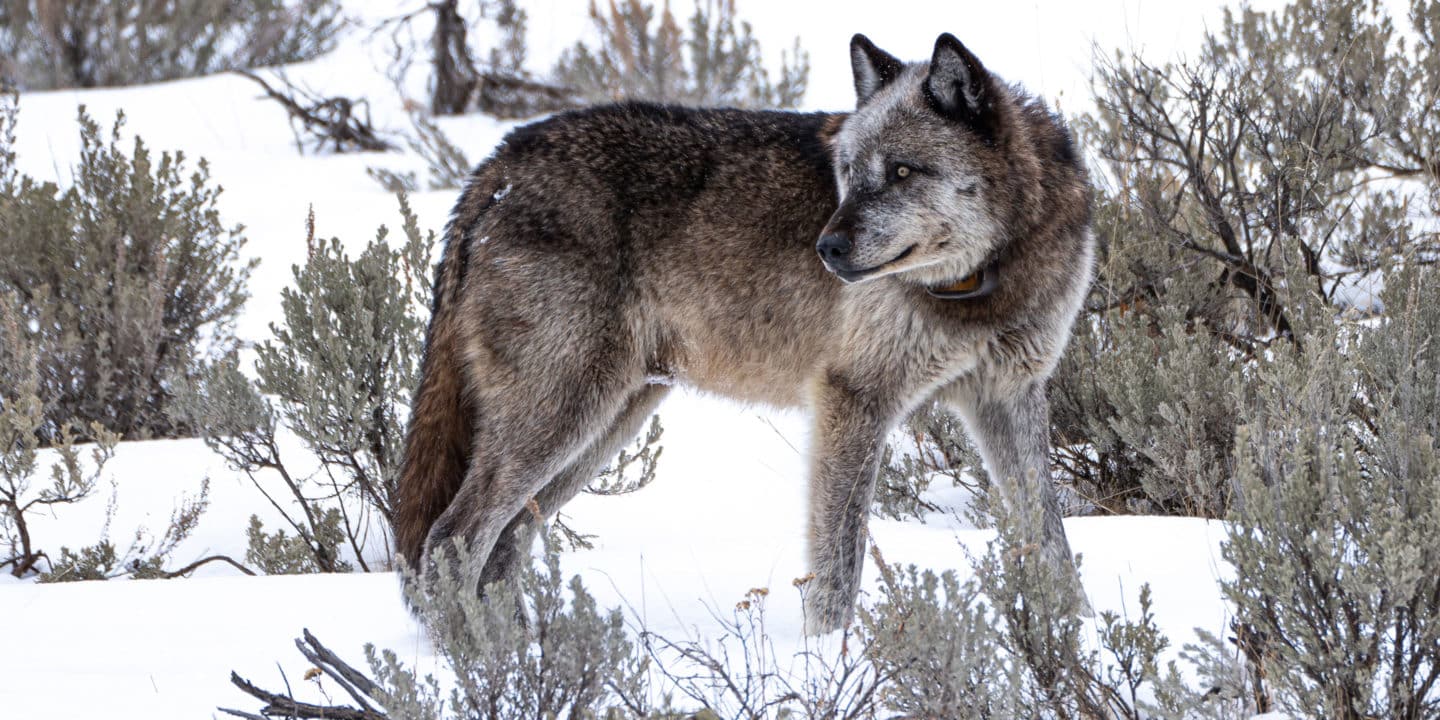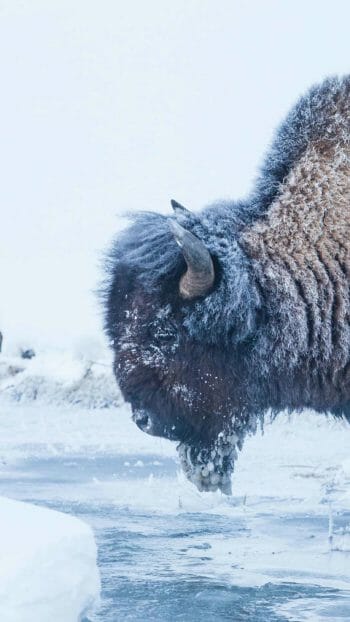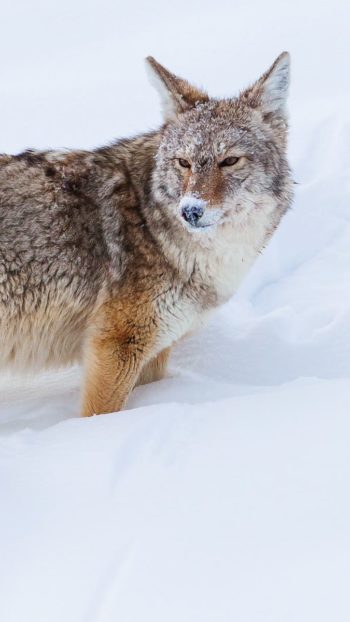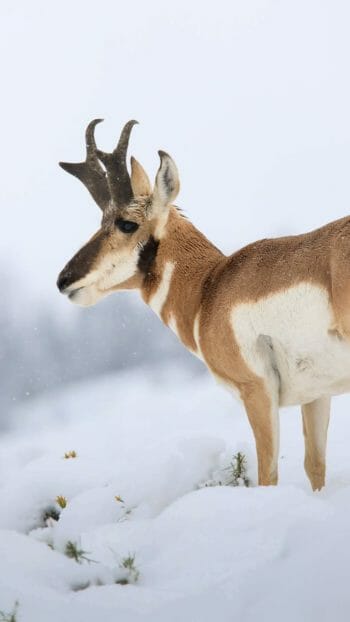Yellowstone National Park is a world renowned attraction, famous for its geothermal features, vast wilderness and abundance of native wildlife that freely roam an eternally preserved landscape. This natural treasure is visited by both domestic and international visitors year round; however, between the months of November and May accessing the world’s first national park can become exceptionally challenging. Being so far north in the lower 48 States and consisting of elevations between 5,000 to 11,000 ft above sea level, this region receives a remarkable amount of snow making roads extremely difficult to maintain during winter. As a result, most of the roadways in Yellowstone will close to normal vehicle traffic during the winter season. During this time of year the only way to access a majority of the park is via a snowcoach or snowmobile tour. Fortunately, there is one part of Yellowstone that remains open year round: the North Entrance. The road between Gardiner and Silver Gate, MT is accessible to drivers year round, allowing access to amazing features such as Mammoth Hot Springs, the Lamar Valley, Slough Creek and the foothills of the Beartooth Mountains. Just an hour away from the Bozeman Yellowstone International Airport, the North entrance is an incredible access point to Yellowstone National Park in the winter!
There are many reasons to visit Yellowstone in the midst of winter. The terrain is adorned with a pristine white mantle of snow, the evergreen embellished valleys and hills are snow flocked creating an enchanting scene. While the landscape is eye capturing, the fine details of this place make it so much more dynamic and engaging. Even in the coldest times of the year wildlife is still abundant. There are herds of bison in their wooly coats tromping through the deep snow to find scarce winter foraging, coyotes filling the air with their songs as they communicate to their mates, eagles soaring through snow speckled skies, and the elusive wolf hunting amongst the hills of northern Yellowstone. Even predating their restoration to the region in 1995, the gray wolf has been an icon of wilderness in the west. Perhaps as many visitors that come to Yellowstone eager to see Old Faithful are also hoping to witness this large canine. If visiting in winter, a myriad of factors actually increase the chances of observing this species in its natural habitat.

The migration pattern of prey species such as elk, bighorn sheep and deer pushes them into consolidated areas which will attract the attention of predatory animals like the wolf that rely on them to survive. As one might presume, if you can find the prey, you will find the predator. The winter season also coincides with the peak of the mating season for foxes, coyotes and the gray wolf. This time of year means all three wild canine species will be actively seeking mates in their prospective territories, making their sightings much more prospective between the months of January and March. Yellowstone National Park is one of the most likely regions to spot wolves due to their concentration and pack dynamics in the area. The iconic wolf packs often seen are the Wapiti Lake and Junction Butte Pack. Both family units can be found around the north end of the park and each consist of at least 20 members.
A traditional wolf pack will consist of a male and female alpha, their young and multiple non-breeding adults. The social hierarchy typically does not permit more than one breeding pair, but the behaviors of the Yellowstone wolves have diverged from the observed norm by allowing multiple breeding pairs to exist in one pack. In 2019, it was documented that the Junction Butte pack had four females that gave birth! Which explains why this is currently the largest pack in the park. These pups will typically stay with their birth pack for 1-2 years and then will separate in order to find a territory of their own, but on occasion they might remain with their family unit if there is space. One important reason the offspring of these breeding pairs will leave is to ensure genetic diversity is maintained. Too much inbreeding amongst a wolf pack could lead to greater instances of death from disease due to a lower immunity developing as genetic diversity decreases. The social dynamics of wolves is still an ongoing study and Yellowstone National Park has been a vital platform from which we have learned a lot about this species’ behaviors.
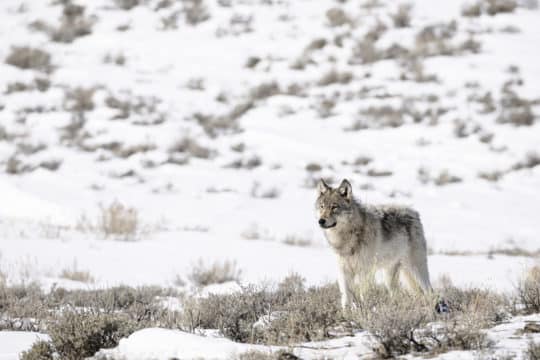
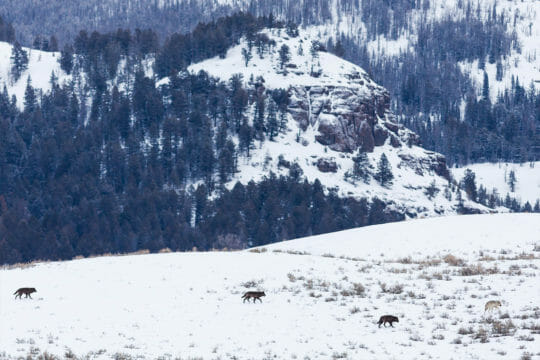
One of the best ways to search for this cunning large canid is having the help of an expert. While a wolf could weigh anywhere between 120-150 lbs, they are still a relatively small creature when roaming within a park that is 2.2 million acres in size. In a day a wolf can travel as much as 30 miles while scouting their territory and searching for food. It is hugely advantageous to have insight of recent wolf sightings in order to anticipate where they could be seen from day to day. Even this cannot guarantee finding wolves on a daily basis due to wildlife’s tenacity for being unpredictable, but it certainly is not detrimental. Yellowstone Safari Company (YSC) is a fleet of highly experienced guides who are equipped with years of knowledge and observations of the Greater Yellowstone Ecosystem. YSC is a locally owned company that offers a variety of full day and multi-day excursions that focus on educating visitors about the incredible ecology of this biologically distinct region, as well as exhibiting to guests the amazing diversity of wildlife that inhabit it.
If you don’t have a full day available, check out the 4 hour Big Sky Snowshoe Safari. This will get you outside amongst the wilds of the ecosystem and provide ample chances to find evidence of animals that utilize the area. If you have more time, Yellowstone Safari Company offers 8-10 hour safaris that are more wildlife focussed and will thoroughly investigate the Lamar Valley region. Alternatively, consider a 2-3 day photography or wildlife tour that will give you abundant opportunities to find wolves and see as much of the park as possible. Our guides are not only equipped with the keen skillset of spotting animals in an immensely vast and wild landscape, but they also have the tools to provide an exemplary experience. Optics, which are a tool that includes binoculars and spotting scopes, are a vital aspect of observing wildlife in their natural habitat without disturbing them. These high quality visual aids make viewing animals from potentially miles away possible, which means you don’t miss a thing while allowing these native species to behave uninterrupted by our human presence. Do you want to learn as much as possible and increase your chances of seeing the incredible megafauna of Yellowstone? Book a tour with the Yellowstone Safari Company!
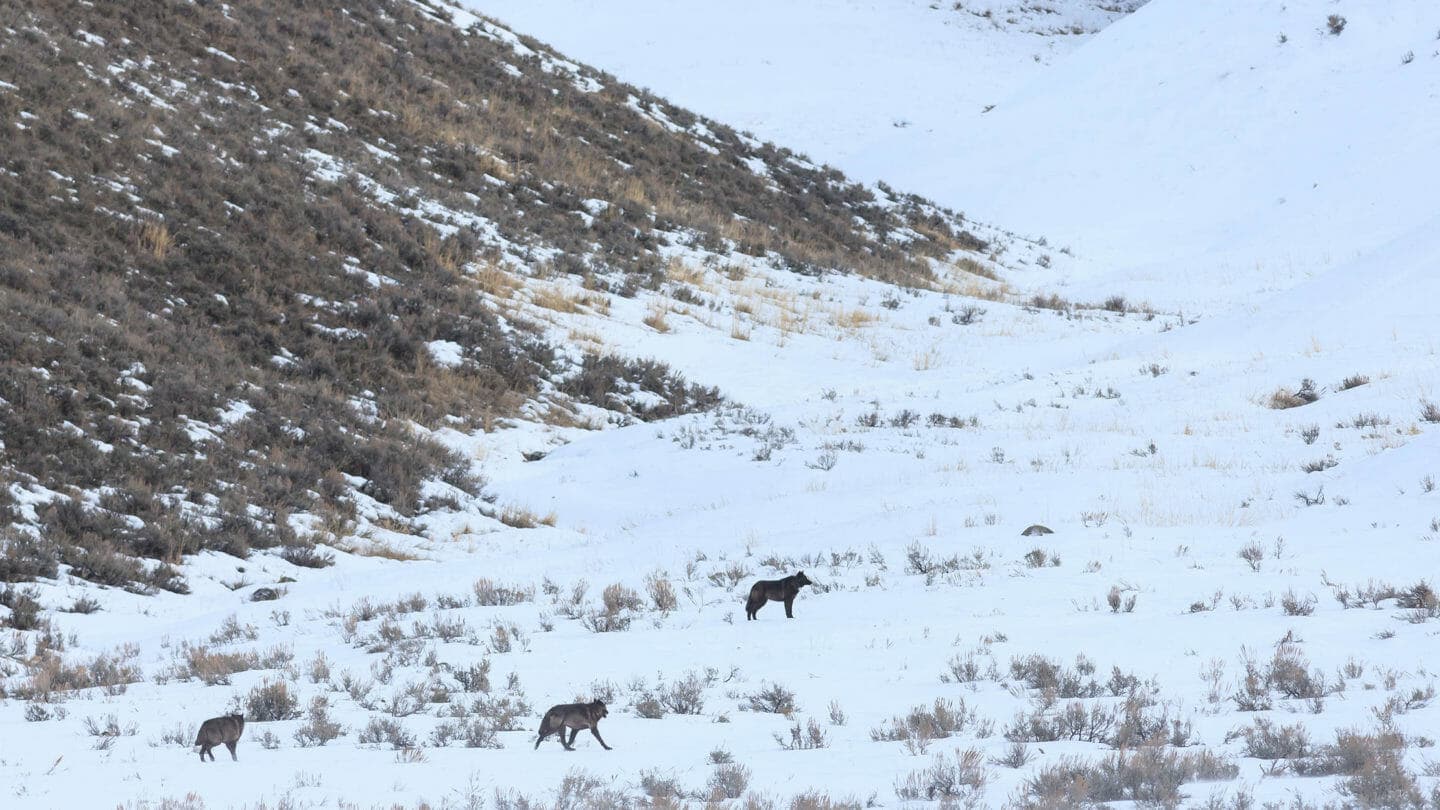
The wolves and the scenery alone should be enough of an incentive to visit Yellowstone National Park, but there are a multitude of other benefits to come specifically in winter. First of all- less crowds! Summer is undoubtedly the busiest season for this park, with millions flocking to enjoy the natural beauty of Yellowstone. If you want a more intimate, exclusive experience consider coming between the months of December and April, you might even find places where it feels like you have the park all to yourself. Solitude is not the only perk, the migration patterns of certain animals can increase the chances of spotting species like bighorn sheep, mountain goats, elk and bison throughout the Lamar Valley, around Mammoth Hot Springs and Slough Creek. If very lucky you might even spot the cunning ermine or snowshoe hare, both of which turn white in the winter to blend in with their snowy surroundings.
You do not have to be a skier to enjoy the west in winter! Yellowstone National Park is for the avid animal lover, wilderness explorer or maybe just for those hoping to witness an amazing snow-laden countryside. Don’t hesitate to arrange your next adventure to this one of a kind park!

